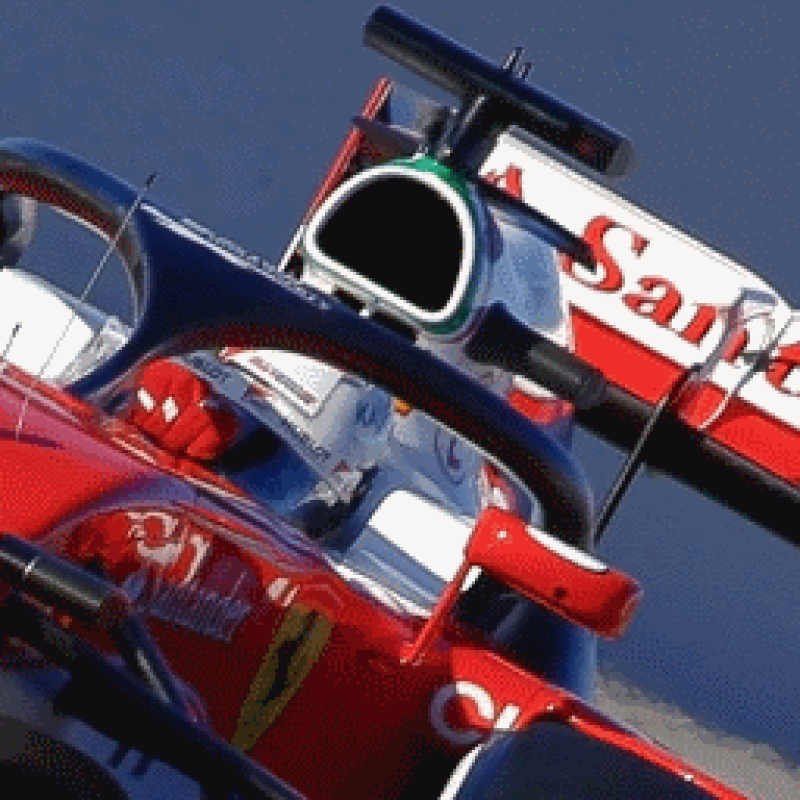Here’s what Formula 1 cars may look like in 2021 if the sport gets its way




Formula 1 has become quite forward-thinking since getting new owners interested in more than just sucking as much profit out of the sport as possible. That was certainly on display in a series of concept cars for the 2021 season the racing series showed to the world on Friday ahead of this weekend's Singapore Grand Prix. All three ideas are much more dramatic in appearance than current F1 machinery, showing how the Halo cockpit protection can be cohesively integrated with the styling. It turns out that 18-inch wheels actually do look pretty damn good.
Of course, the three concepts are about more than just aesthetics. As we've previously discussed , the sport's technical rulebook is going to be thoroughly revised for the 2021 season in an attempt to cure a number of ills including the inability of one car to follow closely behind another due to the effect of turbulent air.

"When we started looking at the 2021 car, the primary objective was to enable the cars to race well together,” said Ross Brawn, F1 motorsport director, in a post on the Formula 1 website . "Once the cars get within a few car lengths of each other, they lose 50 percent of their downforce . That’s a substantial amount of performance lost. So we set about understanding why that was and how we can improve it. I’m pleased to say we’re at about 80 [percent]."

In fact, Brawn first showed the concepts earlier in the week at a tech talk, at which point one of the images found its way onto social media . It certainly won over championship leader Lewis Hamilton. He was effusive with his praise in an Instagram story, writing, "This shit looks dope af. I'm def gonna be driving if cars look like this… just please bring a V12 or V10 back."
Not everyone was convinced, however. According to Autoweek , Ferrari team principle Maurizio Arrivabene said the team's engineers found the concepts "a bit underwhelming" and "like an old ChampCar." (ChampCar was an American open-wheel racing series that split from, and then rejoined with, the organizers of the Indianapolis 500.)

A notable feature on all three of the concepts is the aerodynamic devices just behind the front wheels that, it's hoped, will alleviate a lot of the problem of one car trying to follow another. The problem currently is that an F1 car's front wing does more than just generate downforce; it's also crucial in directing the turbulent wake caused by the front wheels away from the rear of the car, where it could negatively affect the rear wing. So a car running in dirty air doesn't just lose downforce from the front wing, it also affects the rear because that front tire wake control is no longer effective.
By shifting the role of tire wake control to these new aerodynamic appendages behind the front wheels, that turbulent air will be sent on its way regardless of whether the front wing is in clean or dirty air. And the front wing no longer need look like H.R. Giger got a job working in the sport, since it no longer needs multiple elements that stop working in dirty air. (For a more thorough explanation, this article by Craig Scarborough at DriveTribe is fantastic.)
I don't know about you, but I love the way these three ideas look. Still, I am curious how hard the notoriously change-resistant teams will push back in the coming months before Brawn finalizes the 2021 rule book.







The view-from-above of the red car is amazing. Wasp-waist, much??
From a simply looks stand point- I like the 3rd one best.
Don't even try to ask me which of the 3 would be the best to solve the problem of downforce when following another car. That is well beyond me.
WOW, they are quite the vision of the future.
Fascinating read. I had no idea they lost so much downforce at such distances.